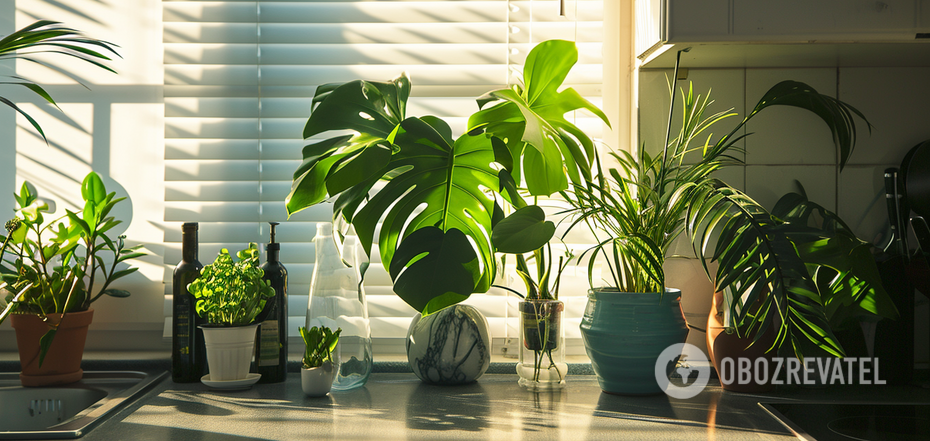News
How to care for indoor plants in summer: 5 important tips
During the summer months, houseplants need special care and attention. Given the more intense sunlight, some pots will have to be moved to avoid burns on the leaves. Other plants will benefit from being moved outside for the season to accelerate growth and stimulate flowering.
Experts gave important tips for caring for indoor plants in summer. It is important to provide flowers with optimal watering, but remember that excessive moisture can lead to root rot.
Avoid direct sunlight
If indoor plants are exposed to direct sunlight, use curtains for protection or move the pots away from windows. Signs of sunburn are brown spots or bleached leaves. If burns are present, remove leaves that are 50% or more damaged, or wait for them to fall off naturally when they are replaced by new growth.
Adjust your watering schedule
Houseplants will need to be watered more frequently in the summer, as high temperatures and bright light accelerate moisture evaporation and cause plants to use more water. However, even in the hottest weather, most plants don't need daily watering; a thorough moistening every 3-4 days is sufficient. Signs of a watering problem include leaf or flower drop, leaf curling, and brown tips at the edges.
Optimize the humidity level
Indoor air can be very dry due to closed windows or air conditioning - avoid placing houseplants near vents. Symptoms of insufficient humidity include curled leaf edges or brown spots. You can increase the humidity by grouping plants together, spraying regularly, using a humidifier, or placing pebbles or a tray in the bottom of the pot.
Protect leaves from dust and pests
Open windows let in dust that settles on the leaves. Keep the plants clean by regularly wiping the leaves with a damp cloth. Neem oil, when sprayed or wiped on, makes the leaves shiny and helps keep them clean, and helps prevent insects, mites, and diseases if used regularly.
Plants standing in direct sunlight can be prone to spider mites. The first signs include dull or dusty leaves, pale coloration, stunted growth, or a very fine network on the surface of the leaves. Isolate the affected plants and treat them with special preparations to avoid the spread of the pest.
Move some plants outside
Some plants can be moved outside during the summer months. Slowly adapt the plants to the new lighting conditions by moving them to a shady, protected outdoor location. Check them regularly for water needs and establish a fertilization schedule. Rinse the leaves periodically to increase humidity and avoid pests.
Ficuses, crotonas, palms, dracaena, and sansevieras can be grown outdoors throughout the summer. Succulents can get a brighter color, and cacti are more likely to bloom if they spend several months outside. Hoyas, begonias, orchids and other flowering plants can also be kept outdoors in mild climates - this will stimulate flowering.
Subscribe to the OBOZ.UA channels in Telegram and Viber to keep up with the latest events.



























